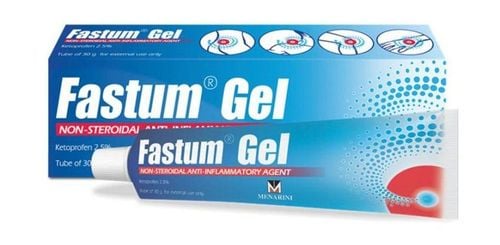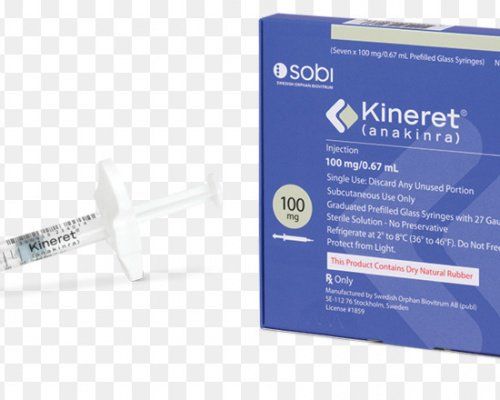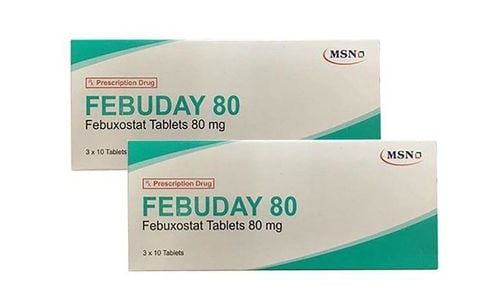This is an automatically translated article.
Tincocam is prepared in the form of lyophilized powder for injection with the main ingredient being Tenoxicam. The drug is used in the treatment of a number of musculoskeletal conditions.
1. What is Tincocam?
1 vial of Tincocam has the active ingredient is Tenoxicam 20mg with excipients is Mannitol and distilled water for injection 2ml. Tenoxicam is a derivative of the oxicam group, which has analgesic, antipyretic and non-steroidal anti-inflammatory effects. In terms of anti-inflammatory activity, Tenoxicam has strong effects similar to piroxicam, diclofenac, indomethacin and stronger than acetylsalicylic acid, naproxen and mefenamic acid.
As with other nonsteroidal anti-inflammatory drugs, Tenoxicam inhibits prostaglandin synthesis. Tincocam has anti-inflammatory effects by inhibiting the production of active oxygen radicals, leukocyte chemotaxis and phagocytosis.
Use Tincocam in the following cases:
Pain relief and anti-inflammatory in rheumatoid arthritis, osteoarthritis or acute musculoskeletal pain including: Muscle strains, sprains and other soft tissue injuries; For the short-term treatment of gout and acute musculoskeletal disorders such as: Post-operative pain, dysmenorrhea. Do not use Tincocam in the following cases:
People with advanced peptic ulcers or a history of gastrointestinal ulcers, gastrointestinal bleeding (such as vomiting blood, bloody stools); Asthma, cases prone to bleeding such as heart failure, cirrhosis, renal failure (creatinine clearance < 30ml/min); Hypersensitivity to Tenoxicam or any of its ingredients, salicylates or other non-steroidal anti-inflammatory drugs; The patient is prone to hypersensitivity reactions (eg, rhinitis, angioedema, asthma, urticaria) to other nonsteroidal anti-inflammatory drugs; Women in the last 3 months of pregnancy; Children under 15 years old; People with kidney failure, liver failure, heart failure.
2. How to use and dose of Tincocam
2.1. Method of administration: Do not use the drug by intravenous line, only by intravenous and intramuscular routes; Usage: Dissolve the lyophilized powder completely with 2ml of water for injection, note that when the drug is mixed, it must be used immediately. 2.2. Dosage Usual dose: First use a single dose of 20mg for 1-2 days, then continue to use oral drug form; Acute gout attack: 40mg/time/day x 2 days; then take a dose of 20mg/day x 5 days in a row; Elderly: The elderly are at increased risk of serious adverse effects. If the use of nonsteroidal anti-inflammatory drugs is essential, the lowest effective dose and for the shortest possible duration should be used; Children: There are not enough data to recommend the dosing of Tenoxicam in children; Patients with renal failure : If creatinine clearance is > 25ml/min: Dosage as usual but patient's health must be carefully monitored; If creatinine clearance < 25 ml/min: There are not enough data to recommend dosage; Note: Tincocam should not be used in high doses because not only does not achieve a higher therapeutic effect, but also increases the risk of unwanted effects; In the case of acute musculoskeletal disorders, the drug usually does not need to be used for more than 1 week, but in severe cases, it can be used for up to 2 weeks.
3. Tinocam side effects
During the use of Tincocam, patients may experience some side effects such as:
With doses commonly used in treatment, Tenoxicam is well tolerated. Gastrointestinal side effects were encountered in 7% of patients treated such as: Nausea, indigestion, epigastric pain; Less common are: Dizziness, headache; If gastrointestinal bleeding occurs, the use of Tincocam should be discontinued; As with other non-steroidal anti-inflammatory drugs, users may experience a temporary increase in liver enzymes when using Tincocam; Tenoxicam may inhibit platelet aggregation and prolong bleeding time. Care should be taken when using Tincocam for patients who will have surgical intervention.
4. Be careful when using Tincocam
Points to pay attention to when using Tincocam are:
Tenoxicam should not be used for pregnant and lactating women; Some cases of using Tincocam have dizziness and headaches, so caution should be exercised when using the drug in drivers, operating machinery or doing jobs that require alertness and concentration.
5. Tincocam drug interactions
Some Tincocam drug interactions are:
Tenoxicam may increase the anticoagulant effect of coumarin; Tenoxicam has no pharmacodynamic interactions with cimetidine, antacids and hypoglycemic agents (such as glibenclamide or glibornuride); Attention should be paid to monitoring the effectiveness of anticoagulants and hypoglycemic agents when used in combination with Tenoxicam, especially at the beginning of treatment; Concomitant use of Tincocam with probenecid increases the elimination rate of Tenoxicam. In the process of using Tincocam, the patient should strictly follow the instructions from the specialist doctor. In addition, patients need to share with the doctor about their medical history, the drugs they have / are taking. This helps patients achieve high efficiency during treatment, limiting unwanted side effects that may occur.
Please dial HOTLINE for more information or register for an appointment HERE. Download MyVinmec app to make appointments faster and to manage your bookings easily.













